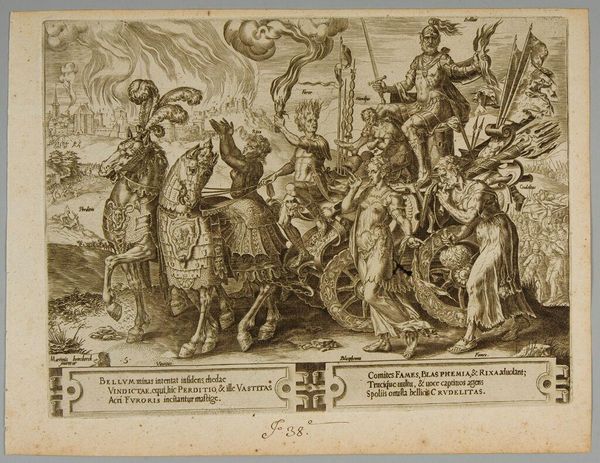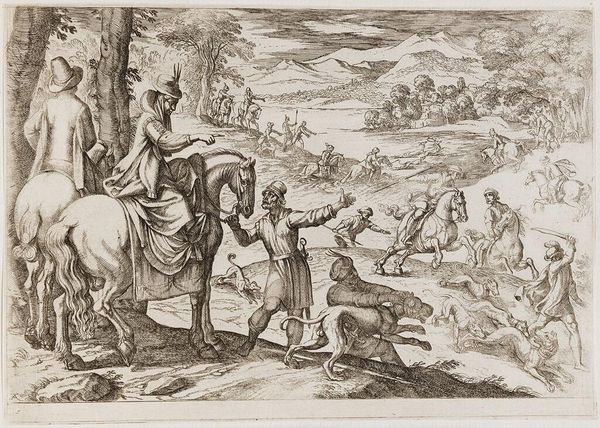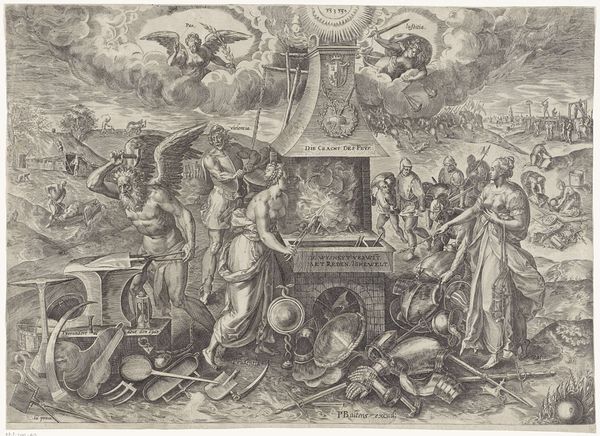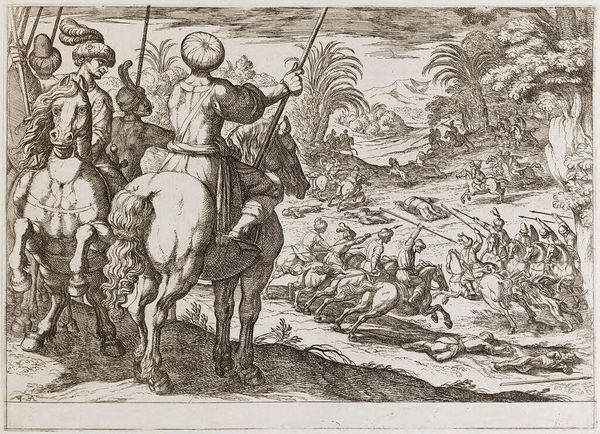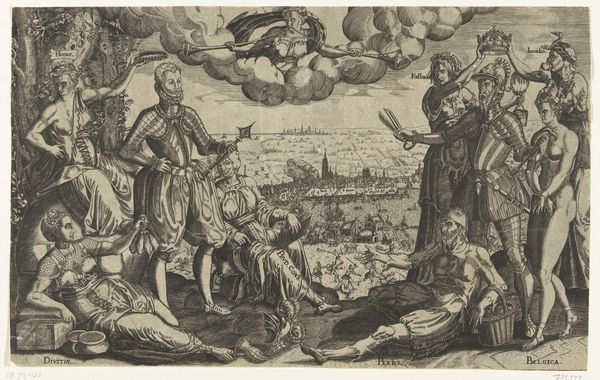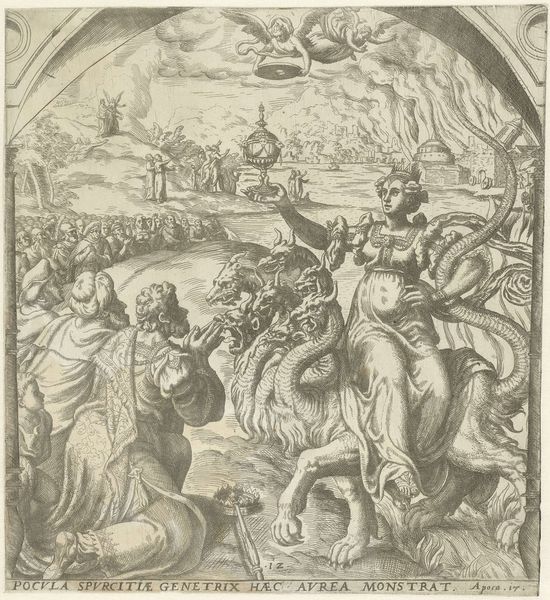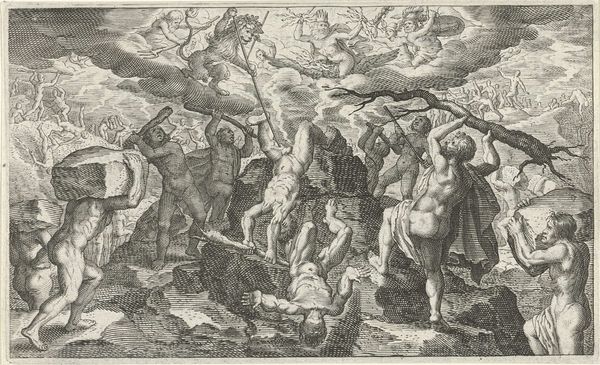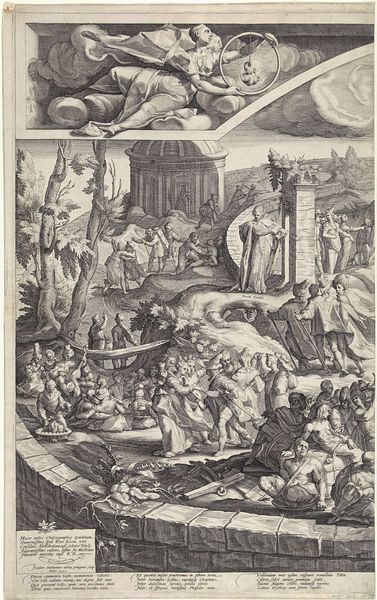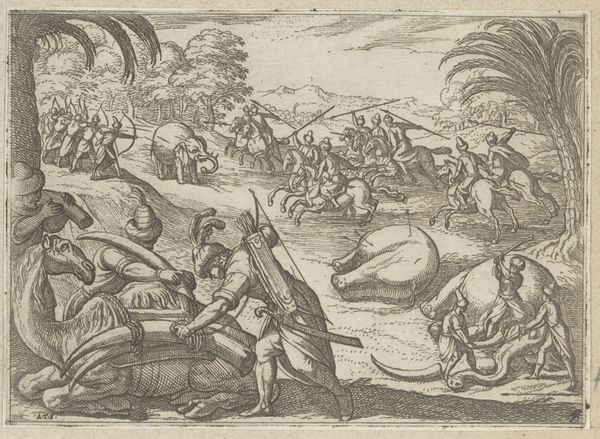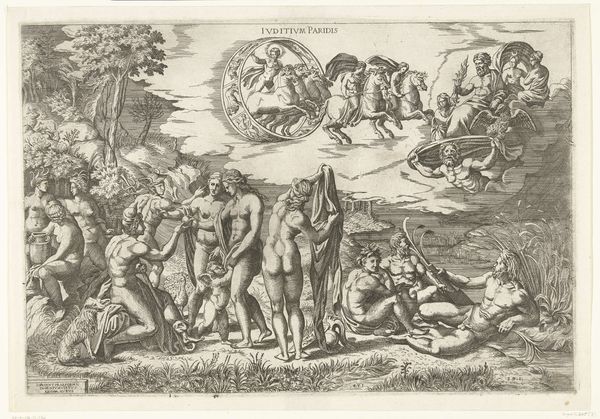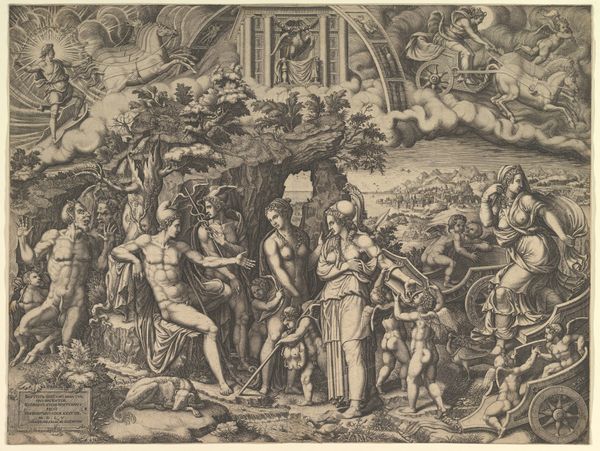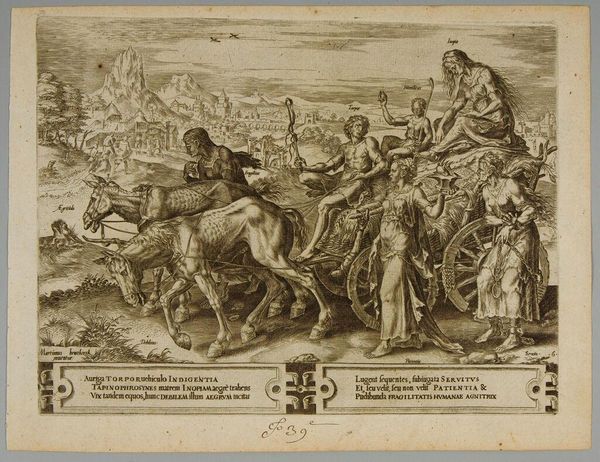
print, engraving
#
ink drawing
#
allegory
#
baroque
#
pen drawing
#
dutch-golden-age
# print
#
line
#
pen work
#
genre-painting
#
history-painting
#
engraving
Dimensions: height 390 mm, width 900 mm
Copyright: Rijks Museum: Open Domain
Curator: Welcome. Let's turn our attention to this print, "Allegory of the Twelve-Year Truce," created in 1609, currently held in the Rijksmuseum collection. It's a pen and ink engraving. Editor: It's densely packed, isn't it? At first glance, it feels like an official parade, with so much intricate detail crammed into a single scene. The material density is quite striking for a print; one can almost feel the weight of all these figures and objects. Curator: Absolutely. This work celebrates a very specific moment in Dutch history, the truce in the Eighty Years' War with Spain. What appears as a simple parade is actually rich with political symbolism and historical context, reflecting the burgeoning Dutch Republic's self-image. Editor: The way they've portrayed the city in the background—a prominent port! That, coupled with the presence of dignitaries, highlights trade as a crucial element and reminds us that these truces weren't just about peace, they were about resources, labor, and sustaining the economic infrastructure. Curator: Precisely. And consider how this print, likely disseminated widely, acted as propaganda. The artist showcases the benefits of peace but also reminds the Dutch populace of their hard-won freedoms and the importance of unity and continued vigilance. Editor: Look at the varying textures achieved solely with ink. There's a clear attention to surfaces, from the rough spun wheels on the wagons to what seems like velvet clothing on dignitaries. What does the layering and pen work tell us about the print-making workshops and materials available? Curator: That's a superb point. These mass-produced prints brought complex political narratives into homes and public spaces and fostered a sense of national identity through repeated viewings. It became a part of everyday material culture. Editor: It’s also interesting how the artist frames the rulers, as a craftsman of narrative; they controlled the process of production. This object reveals the economic interests that underscore social movements. Curator: Examining the allegory alongside other political prints and pamphlets from the era allows us to see how these images actively shaped public opinion. It also opens avenues for analyzing the distribution networks of this type of political visual and it is a real time capsule. Editor: It is fascinating how a seemingly simple medium like ink on paper can convey such a wealth of information about its era. Thanks, I see now!
Comments
No comments
Be the first to comment and join the conversation on the ultimate creative platform.
